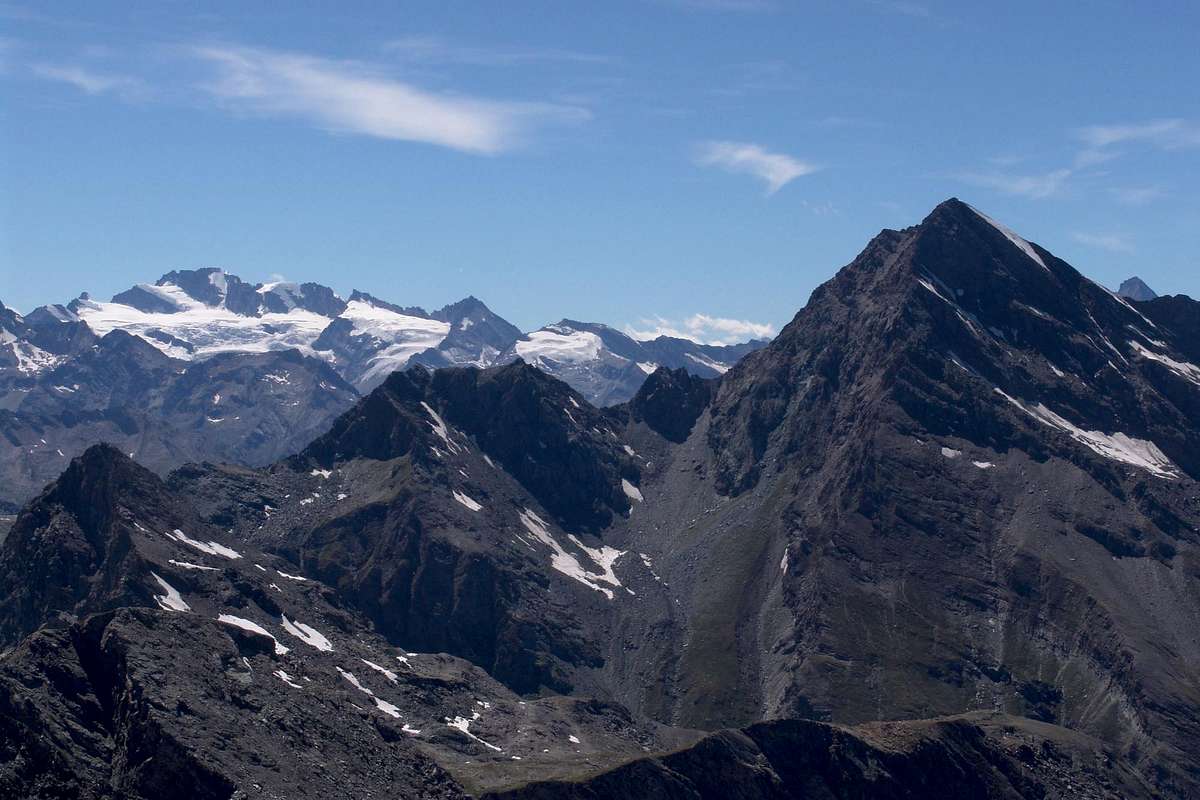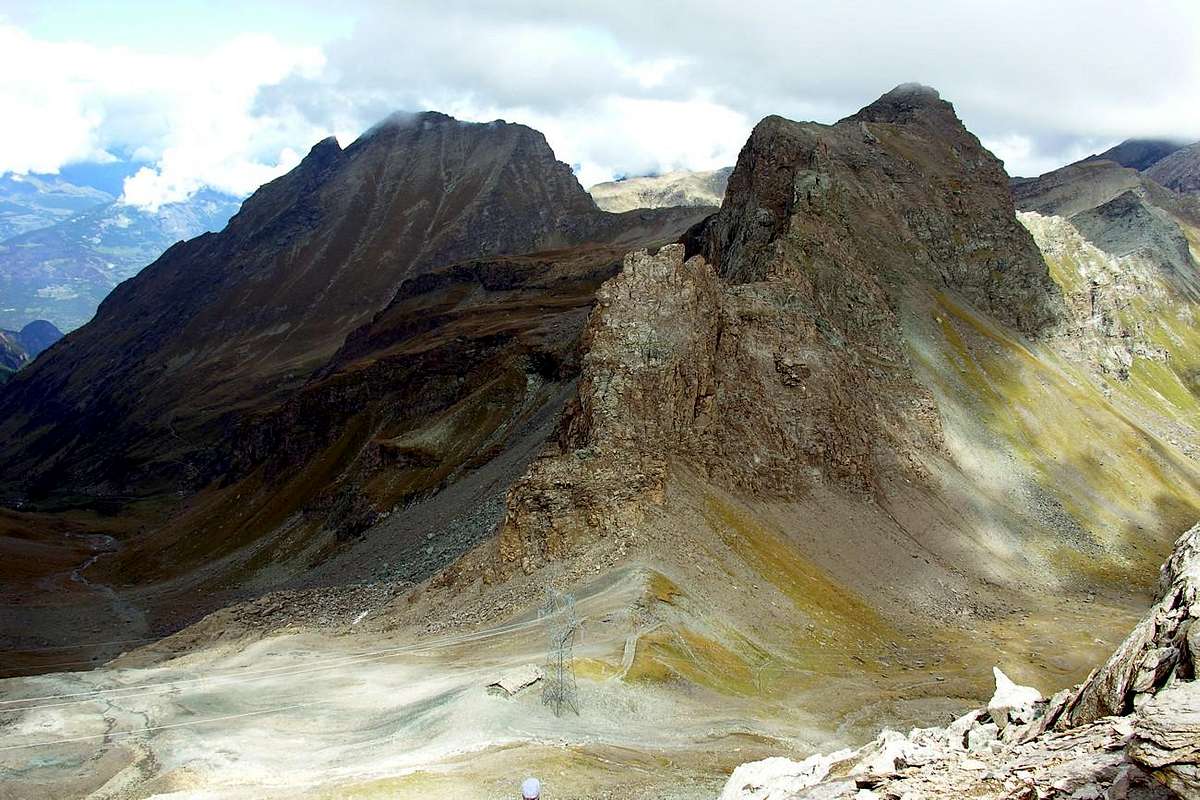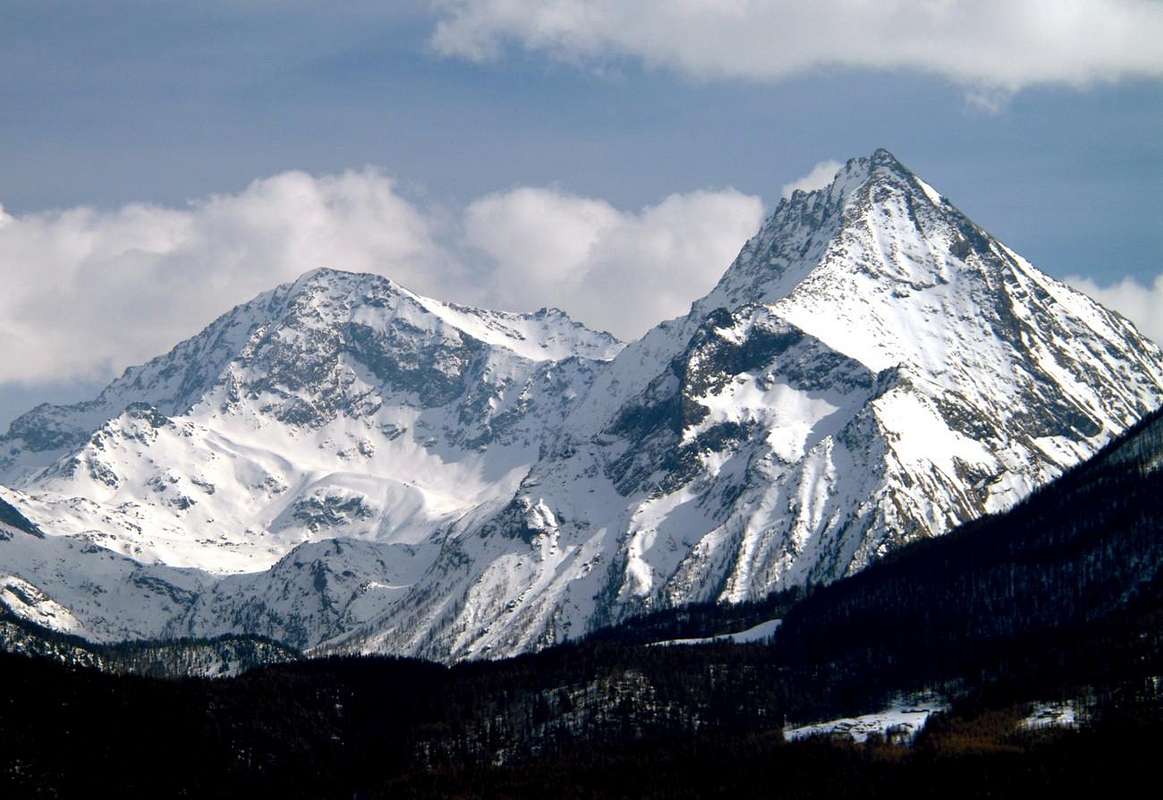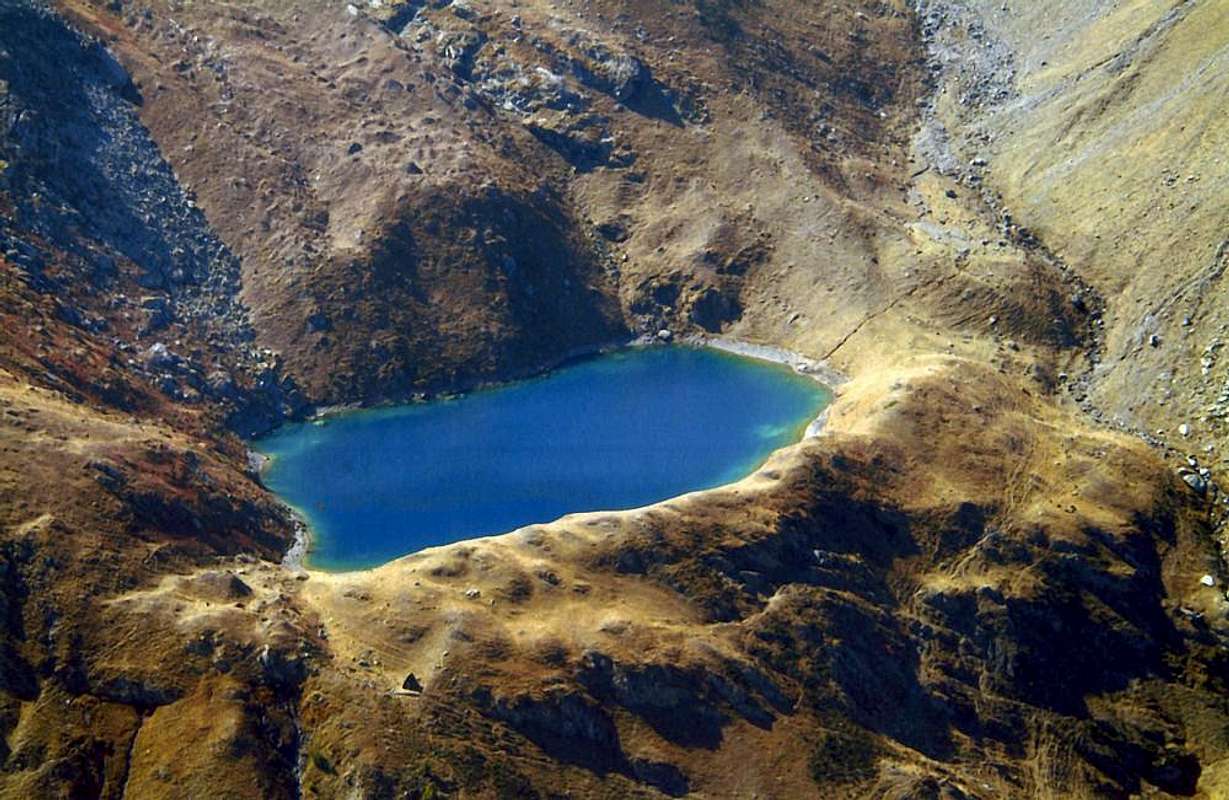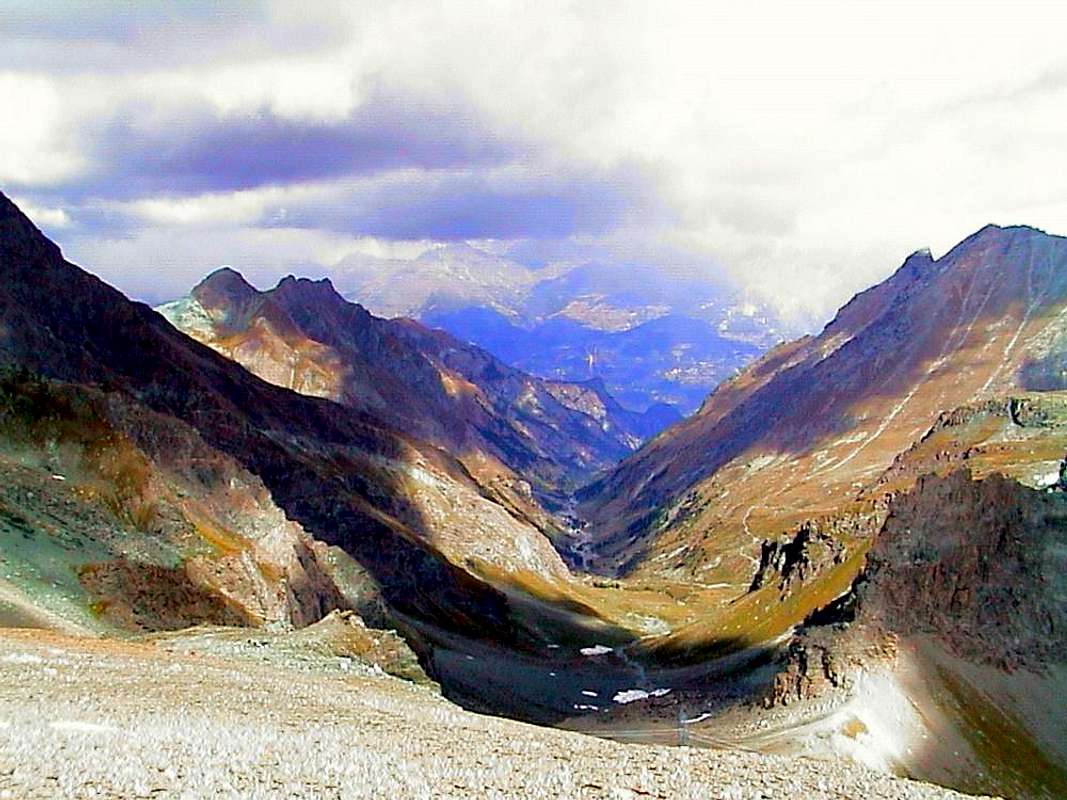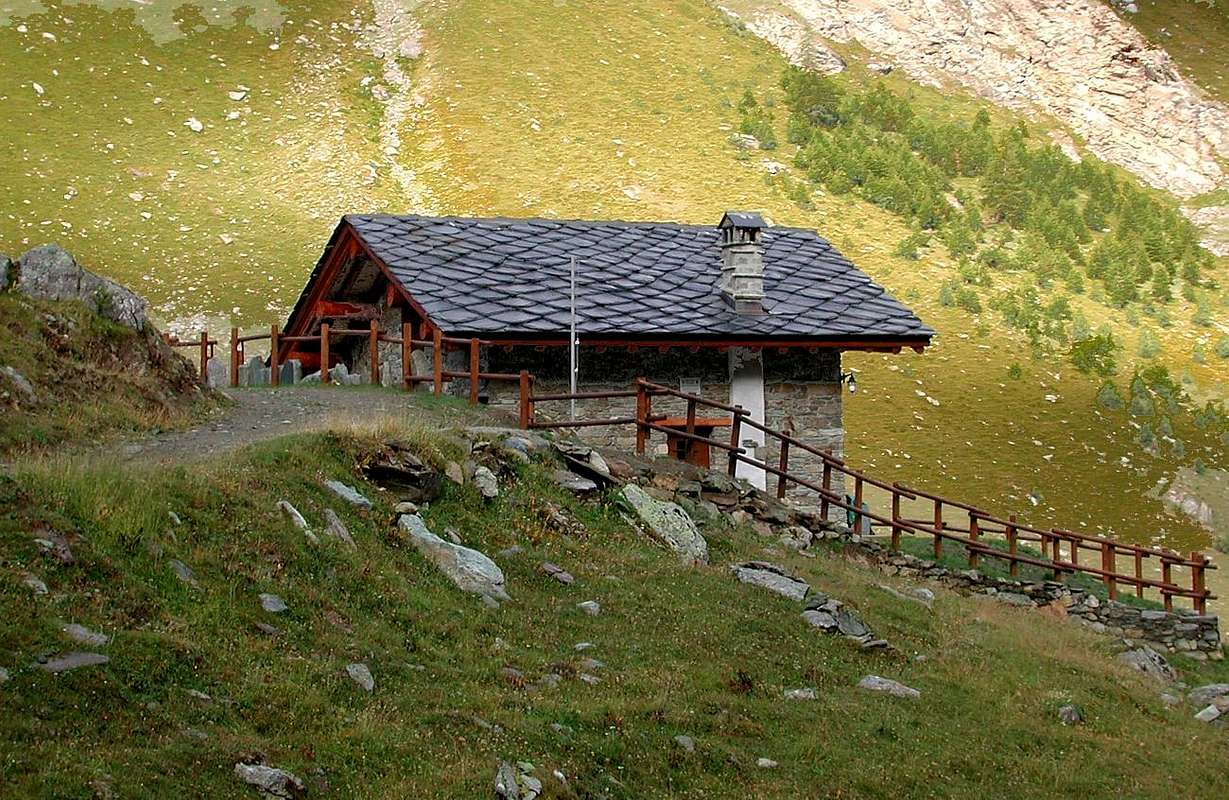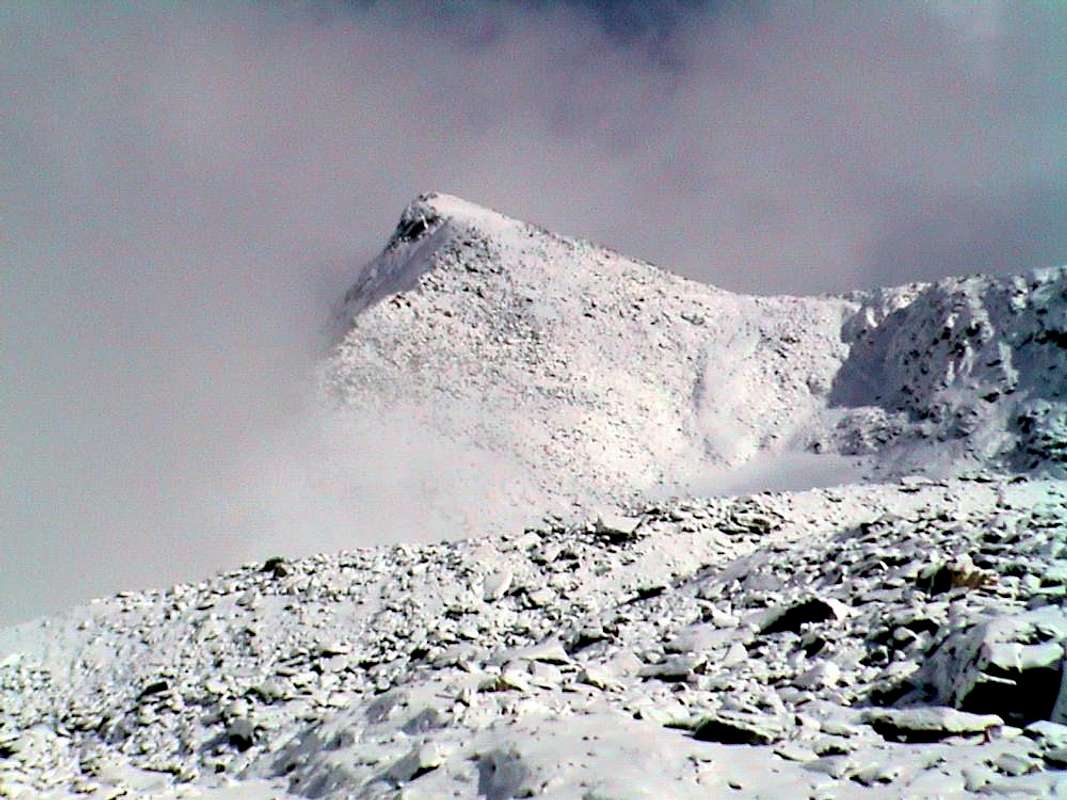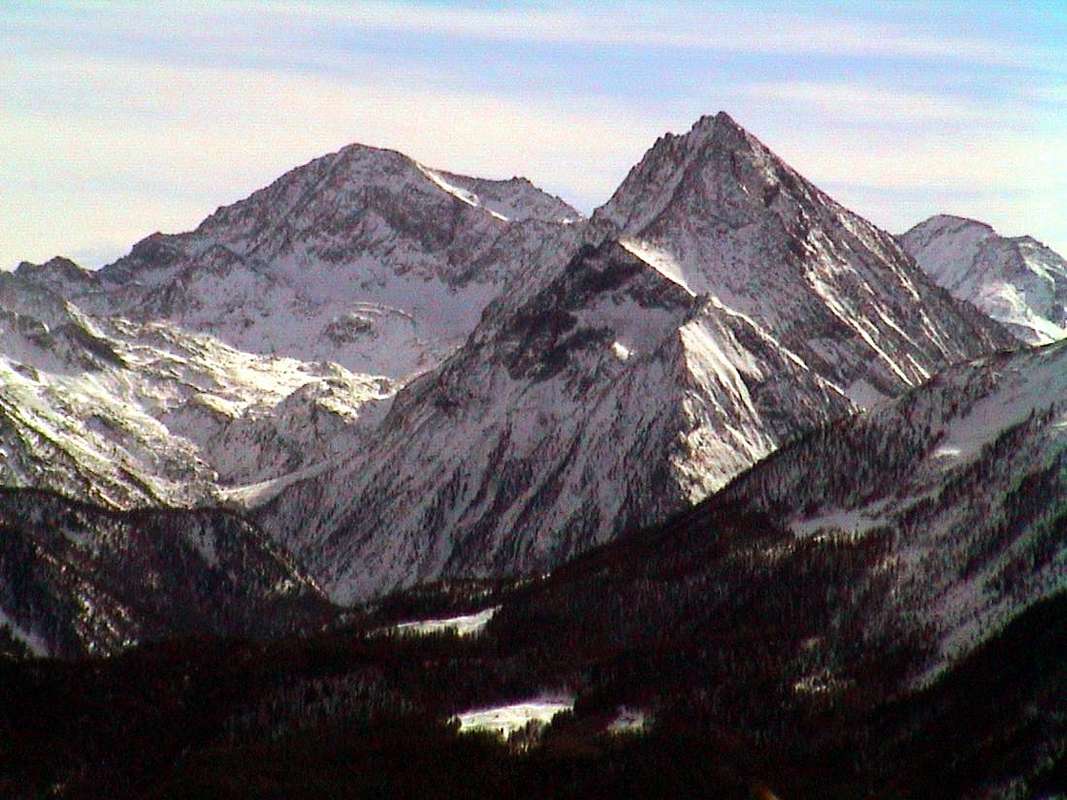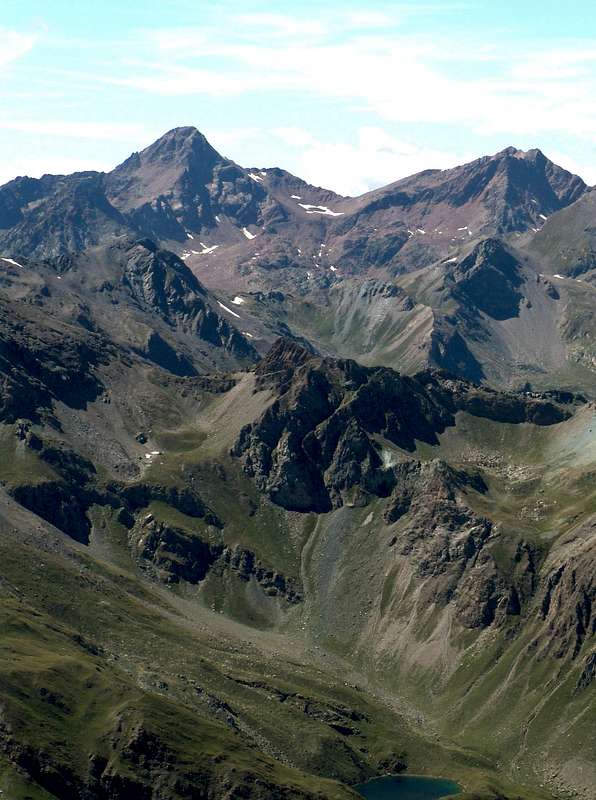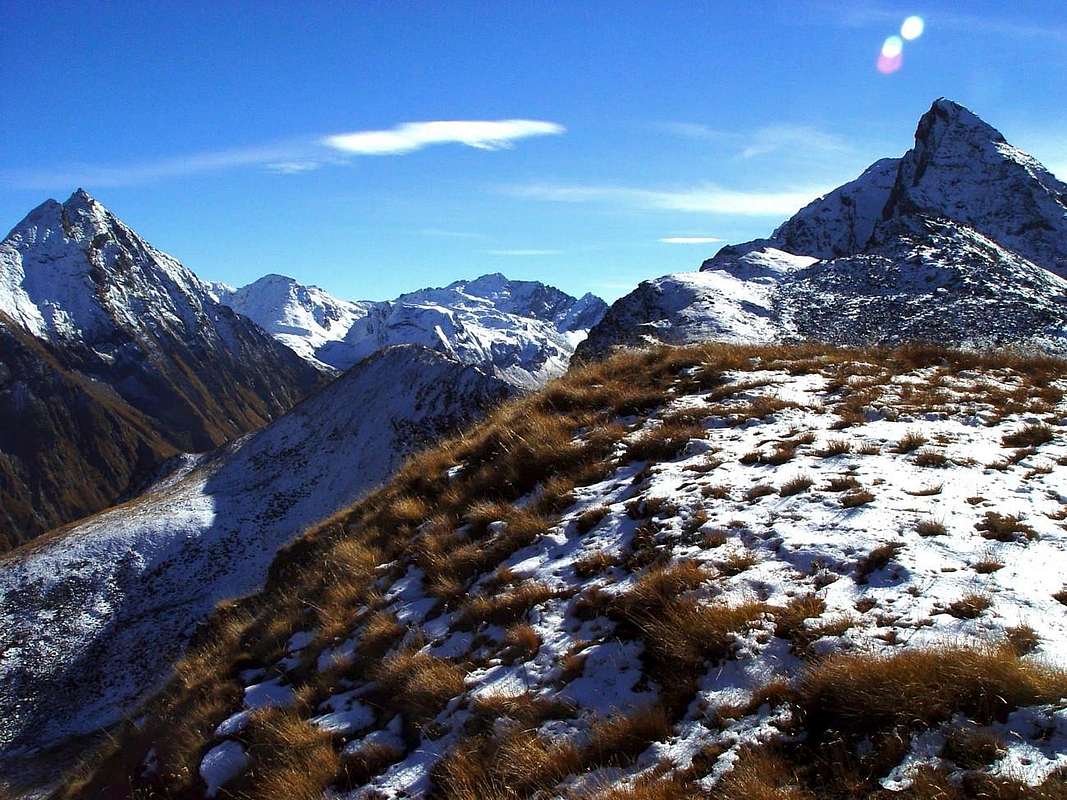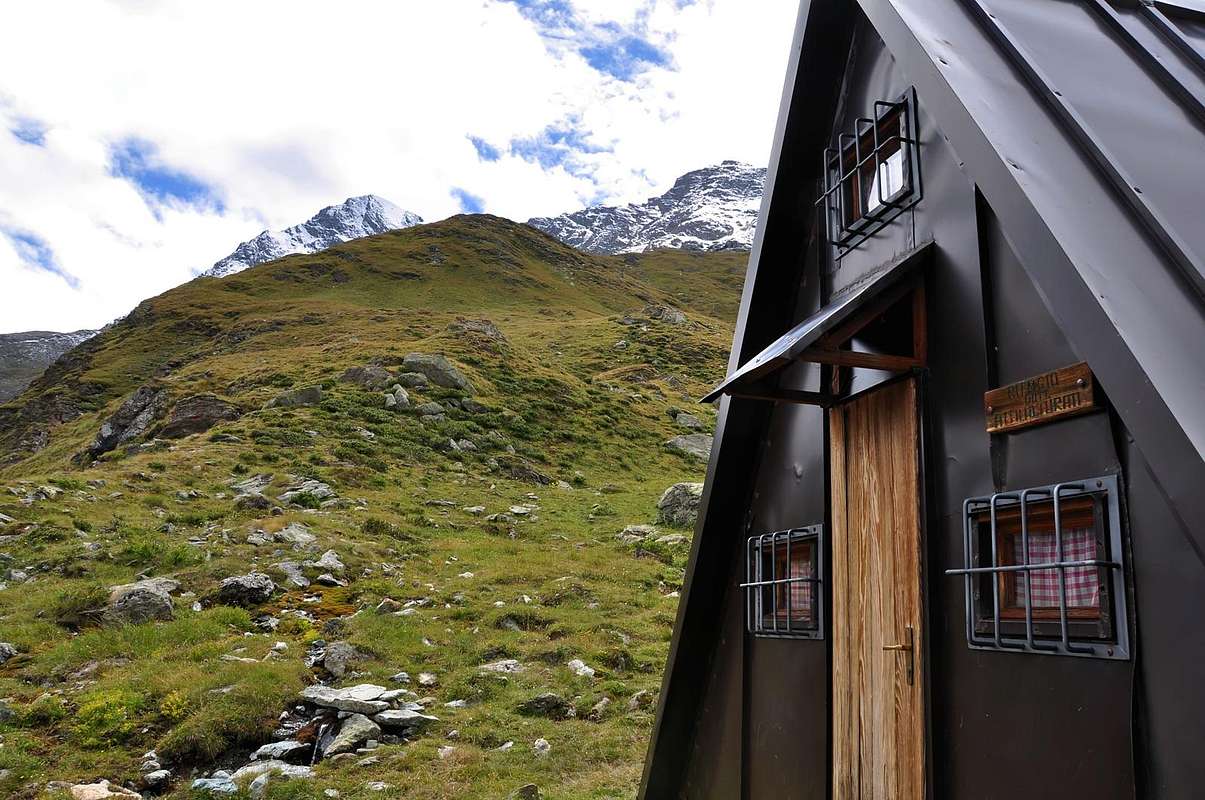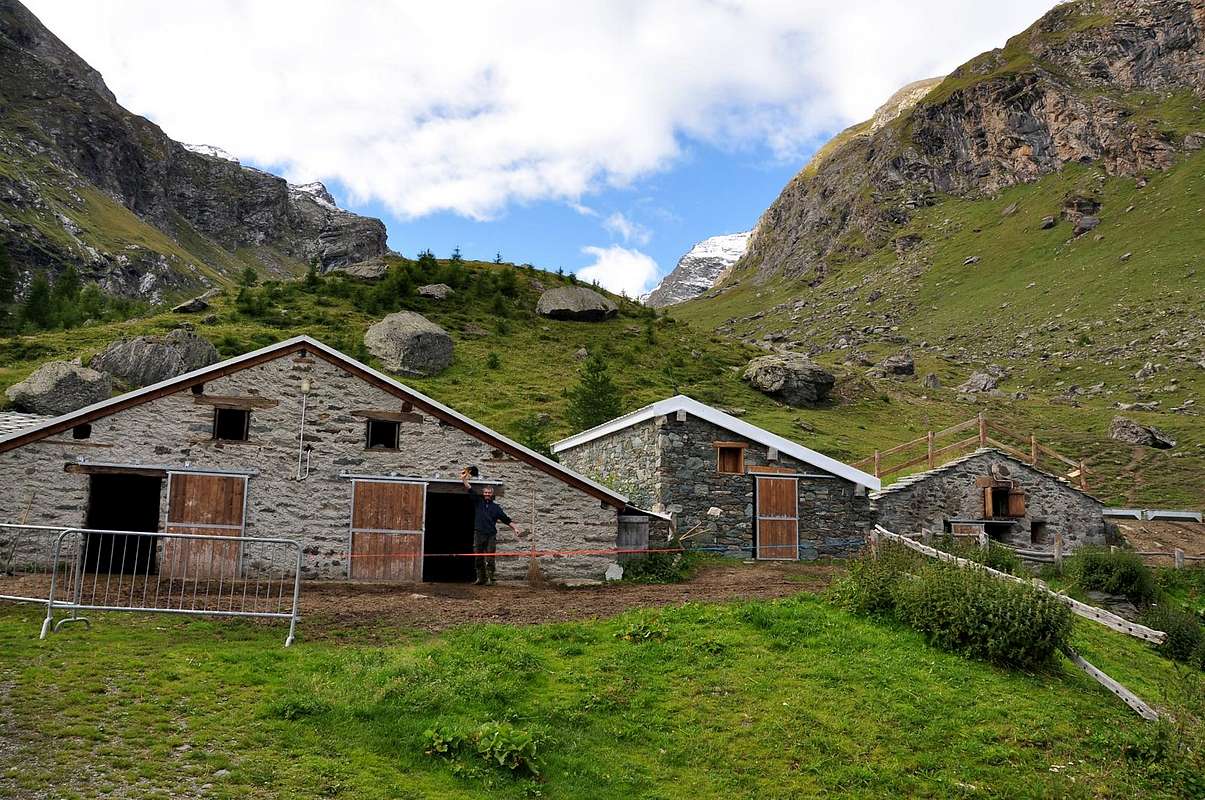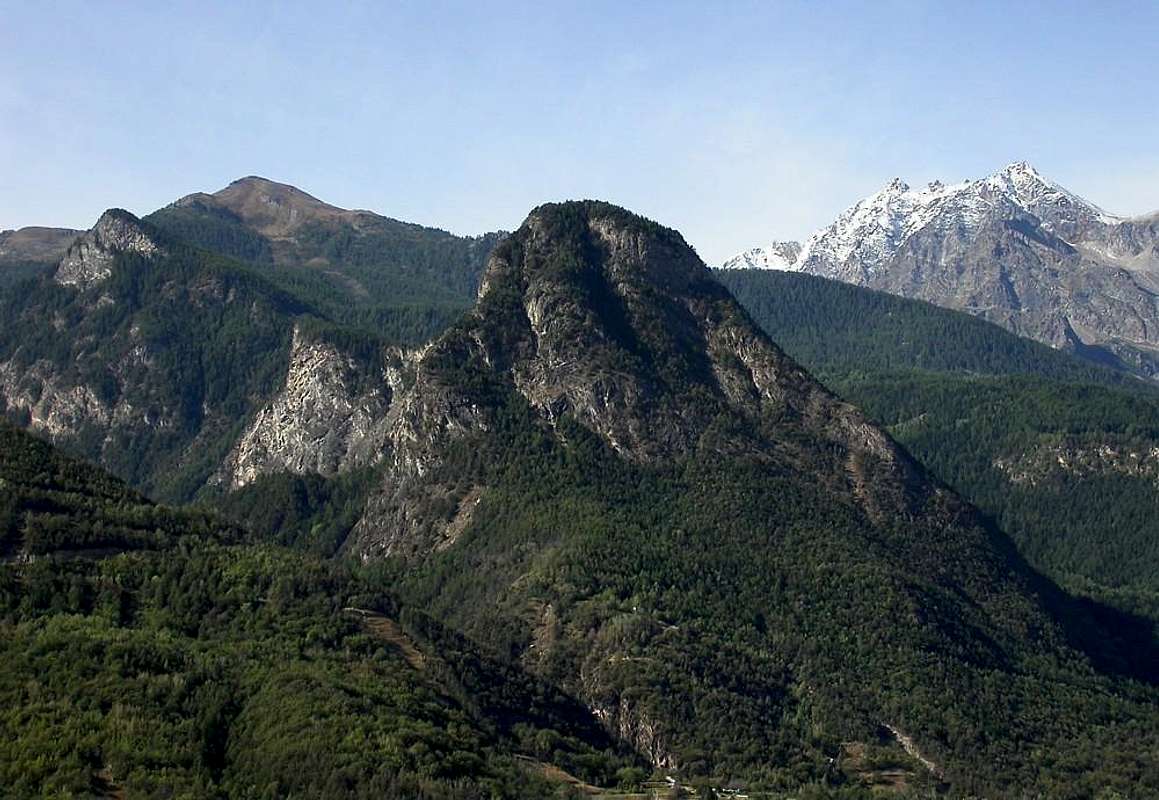Non é una valle che possegga molti laghi, ma i due che ha, Margheron e Lavodilèc, son veramente stupendi. Sembran, appartati come sono, vivan in altro pianeta, ma non dimenticati né da Dio, né dagli uomini. Una gita ai medesimi, anche se lunga poiché bisogna partire dall'Alpe Lovignana sopra la Frazione di Barche, é già un obiettivo a se stante e gratifica dello sforzo effettuato. Due angoli di Paradiso che ancora la massa non troppo conosce ed ancor meno frequenta; più un ritrovo per amatori della Natura locali o per i pescatori. Il primo "si rifugia" ai piedi dei repulsivi canaloni Orientali del Mont Rafray (3.146 m), dal quale, se tendete bene l'orecchio, sentirete ancora arrivare gli squilli del corno di caccia dei Guardiacaccia di Re Toio" impegnati nelle loro battute allo stambecco, anche se poi dovevan magari accontentarsi del camoscio, tant'é ch'era conosciuto come "La Montagna dei Camosci". Gli stambecchi? Scappavan tutti sulla Sommità o si davan giù per gli orridi canaloni che circondano la montagna in numero d'oltre venti. Quando il 21 di Agosto del 1900, scendendo dal Mont Glacier ed attraversando dal Col Fussì a quello di Eyelè, arrivarono Nicola Vigna, Carlo Ratti e Giulio Toesca di Castellazzo pensaron d'averne compiuto la prima salita. Attendeva loro però amara sorpresa, poiché sulla terza delle tre Sommità, o Vertice Settentrionale, trovarono il segnale lasciato dai Topografi Militari di Sua Maestà Re delle due Sardegne o dai Guardiacaccia del Re che altresì avean tracciato una via di salita che occhio attento sà ancor oggigiorno individuare: su quello spigolo che divide la ripida Parete Sud dal più "docile" Versante Sudovest, sopra l'Alpe dell'Etsely Damon. Loro eran invece saliti tramite il ripido spigolo opposto o Sudest, che separa questa dai vertiginosi canaloni del Versante Est, proprio sopra il Lago Margheron. Non trovaron, e neppur interessava lor trovarne, stambecchi e nemmen camosci, che nel frattempo eran divenuti scaltri ed avean ben imparato a nascondersi senza far troppo bella mostra degli splendidi trofei. I più furbi intelligentemente eran "espatriati" nell'attiguo di St. Marcel, ove i Guardiacaccia del Barone Beck Peckoz di Gressoney osservavano più che attenta sorveglianza. Appositamente non v'abbiam parlato di questa notevole e slanciata piramide che, situata su d'un contrafforte secondario del Mont Glacier, scende a separare la Valle di Fènis-Clavalité da quella "più nascosta" di Savoney: dopo il Colle d'Eyelè o dell'Etsely lo spartiacque si rialza al Rafray o Raffrey ed anche Refrey per poi precipitare, come la prua d'un grande vascello, sopra il Bec de Viot (3.051 m) ed il Bec d'Ause o d'Ansey (2.325 m), pennone estremo. Questo ramo taglia l'intera vallata dividendola in due netti e quasi paralleli valloni, prima che la medesima raggiunga gli Alpeggi di Grand-Alpe (2.116 m) per infine distendersi nell'Alta Comba Tersiva ai piedi della grande piramide. L'altro lago o di Lavòdilèc (2.357 m), che per un giro di parole rende il toponimo improprio (poiché vorrebbe significare Lago o Lavò del Lago o Léc, quindi inutile ripetizione), é posizionato sul fronte opposto, racchiuso tra le creste della Punta del Tessonet e del Pt. Avert, congiungentesi al Colle di Lavodiléc (2.870 m), ampia porta di passaggio verso l'attigua Valle di St. Marcel e sulla quale passa l'Alta Via n° 2 e l'Intervallivo n° 102 della Valle d'Aosta. Anche questo é di sembianze meravigliose, ma il colore delle sue acque é completamente diverso. Là eran verdi-grigiastre, qui son d'azzurro, quasi cobalto. Ma per entrambi vale il concetto essenziale di solitudine e d'incontrastata pace. Se poi siete vero Cacciatore di Laghi, ne trovate un terzo minuscolo, il Lac Glacier (2.935 m), "appollaiato" sotto alle pendici Nordovest del Glacier; molti gli passan sotto per andar al Col Fussì o Fussy (2.912 m) e poi scavalcare in Valle di Champorcher oppure affianco per salire la "Normale" del Mont Glacier da Fénis, ma quasi nessun purtroppo lo raggiunge. "Muore" per solitudine, ma in Santa Pace, tra il suo Glacier e l'Etsely sott'al Rafray.
Getting There
BY CAR:
- From TORINO, MILANO, etc: Motorway A5. Exit at IVREA or Quincinetto (PIEDMONT) From IVREA Town: in West (Southern side) to Pont Saint Martin, Donnas, Bard, Champdepraz, Pontey, Fénis, Saint Marcel. From Fénis (537m) to Clavalité-Grand'Alpe Pastures (2.129m; through dirt road), just below E. Borroz/Rotary-Clavalité Refuge (2.156m) at Cuneu Alp. From Saint Marcel (630m) to Saint Marcel Valley and Turati Reserve up to the Mulac & Grande Chaux Hunting Houses & Alp (1.937m, 2.370m).
- From FRANCE: through the Mont Blanc Tunnel to Entrèves-crossroads to Vény/Ferret Valleys - Mountain Guides of Courmayeur - La Saxe Rock Gym - Courmayeur. By Little Saint Bernard Pass, closed since November until half May to La Thuile Valley - Pré Saint Didier - Courmayeur. It is not necessary to take Motorway A5: you can drive on SS.26, in the direction of AOSTA - IVREA - TURIN.
BY PLANE:
- Aeroporto "Corrado Gex" Saint Christophe (Aosta).
All its Vallons
VALLEYS & VALLONS In order to deploy clockwise from Fénis to Saint Marcel Municipalities
Fénis-Clavalité-High Comba Tersiva Valley Fénis-Clavalité-Savoney Valleys: from Fénis-Barche (607m), Arbussayes, La Cerise, Le Plan-Mayen (989m), Le Leffrey (1.074m), La Servettaz (1.107m), Lovignanaz (1.169m), by dirt road without permession; from this Les Fontaines (1.281m), in Southeast Petite Bella Lana Alp (2.256m) to Ballalanaz Pass (2.501m) to Point Charmontane (2.683m), through and under easy South Crest. From Les Fontaines in South Margheron or Marqueron (1.442m), Robbio also Robiaz (1.512m), Chez-Boz (1.508m), les Maisonnasses (1.534m) Pastures; from this in Southeast La Grande Ballalanaz Alp (2.334m) to Raye Chevrère Hill (2.703m), with path. From Maisonnasses in South Maison Blanche (1.526m), Bioley (1.527m), Chardonney (1.531m) Pastures; from this in Southeast Le Crin (1.587m), Les Bayettes (1.642m), L'Orgère (1.747m), Savoney (2.138m) Alps to Marguerite and Mé(d)zove or Margueron Lochs (2.376m), with path. From Lake in Southeast Medzove Hill (2.613m) to Lakes-Champdepraz Vallon, with various paths.
Clavalité-High Comba Tersiva Valley: from Chardonney in South La Coutà, Celey (1.570m), Coujeic, Beneyte (1.733m), Le Bayet (1.918m), Meney (1.949m) to Grand Alpe (2.129m) Pastures, with dirt road-path. From fork, immediately before in East, Etsely or Echellier Low (2.097m), Upper also Tramouaille (2.437m) to Etsely Pass (2.812m) and descent to Savoney Valley, with path. From Grand Alpe:
1) - in East-southeast Tramouaille de Cuneux (2.509m) to Fussy Pass (2.911m), between Mounts Glacier (3.186m) and Delà (3.139m), with path;
2) - in South-southeast Moussaillon Loch, Pass (2.847m) to Dondena Valley in Champorcher Valley, with paths.
3) - In South on High Comba Tersiva Fénis Hill (2.833m) to Pontonnet Vallon, with paths. Connection in West with Pontonnet Hill (2.898m), descent in Urtier Valley-Cogne Valley, with paths.
Pieiller Vallon: from Fénis-Le Perron (582m) Hamlet, Champlan, Crou de Ban (926m), Le Pieiller de Sermoz (1.075m), Maison Longue (1.112m), Le Plany (1.174m), Le Pieiller (1.230m) little Villages, alternative on hairpin road (about 1.200m) to Le Coteau (1.234m) Village, with municipal road or path from valley floor; from this:
1) - in Northeast Mount Saint Julien (1.384m), Saint Grat Sanctuary and, through short descent, Saint Julien Hermitage, with path.
2) - From Le Pieiller road continuation in Southeast to La Morgnettaz (1.245m), Champremier (1.833m) Villages and connection with Les Druges Comba, at the entrance of Saint Marcel Valley;
3) - or the same connection but with path, starting from The Morgnettaz, passes through the small Villages of Porteron (1.368m; sledge run Combasse), Malplanet (1.495m), Les Druges Low and High (1.567m).
Historical and some small notes Inquisitiveness
Little Histories & tiny Amenities
This long valley opens behind the Municipality of Fénis (537m), sited with its beautiful Medieval Castle of 1330, between the Cities of Saint Vincent to the East and Aosta. The same lies on the Southern side of the Central Valley of Baltea and at the slopes of Chermontane and St. Julien, who constitute the last bastion of the same that had originated at the foot of the pyramid of Tersiva. This castle, completely built with local stone and certainly one of the most magnificent of all Italy, with its towers and lacy walls was built by the Family Challant and more precisely by Aimone, who served first as Tutor to the Duke Amedeo VII° Savoy House and later by General Commander of the Troops of Savoy in the first half of that century. Sold to local farmers in 1716 by Count Francesco Giorgio to fulfill the legal costs incurred by the father and then to save the noble title of Challants with their privileges, is of great value both for the exterior architecture and for its interior, unfortunately worn and habited by commoners who used it improperly to their home for over 80 years. In 1895 the providential intervention of Architect Alfredo of Andrate saved him from complete ruin; the same, after partial restoration, gave it as a gift to the Italian State, while his feudal courtyard was faithfully copied in 1884 in the Medieval Castle Turin. This feud stretched from the small Municipality of Chambave, beyond the Baltea with its famous vineyards, up to above the wide Clavalité Plan (by Latin Clava), whence the name that prevailed even on the most current toponym of Val Fénis. This resulted favorite area in past centuries, as the most suitable for growing (the famous chestnut Fénis) and farming, while the higher areas were exploited for the pastures in summer and for water control (well showed the largest Tersiva Glacier at the foot of Wall North-northeast and now gradually being recession). But this area was already known and used by the Romans as it is here that they built two roads there and exploited widely Mineral Resources, today completely abandoned. The phasing out of the same, certainly less competitive than those of iron, copper and manganese in the adjacent Valley of Saint Marcel, led to more and more apparent oblivion of the same, reduced almost exclusively to Hunting Reserve by the Counts of Challant. Over 15 Kilometres long and varies in width between 3 and 5 Km., the Clavalité possesses, as we go along is elevated in the panoramic prerogative to offer the two pyramids of the Matterhorn, downstream, and of Tersiva, upstream, that give the impression of rivaling with one another, almost facing each in an epic duel. At about 15 Kilometres from Aosta Fénis ranks near the exit of Highway 5 near Aosta East, while it is 1.5 Kilometers; from the National Road n° 26, where, after a roundabout, past the Dora Baltea on a large stone bridge. Is composed of seven villages and its inhabitants (1427 in 1964) Nowadays exceed two thousand. There are post office, public telephone, shops, Tourism Committee, Pro-site and various sports facilities, while the nearby International Luge Track of Combasse (on the border with Saint Marcel) has now been closed almost since nearly two decades. Also worth visiting are the Church with the Bell-shaped spire, the "Cross Ramoliva" of 1500 and the small Chapel of San Giuliano (1.372m) at the beginning of Clavalité wide Plain. While crossing the dense Forest of Ban, you can come to Southeast in the very wild Ponton Vallon, interposed between those of Champdepraz or of the Lakes, Bellecombe (famous for the presence of minerals with garnets and vesuvius), Valmeriana (ancient mine became to Plan of Lovo) and Val Fénis. Find also many pastures, but only two bivouacs: the E. Borroz Rotary Club (2.156m), just above the Grande-Alpe (2.120m) and on the way to the Etsely and Marquis Turati (2.342m), the latter private and always closed just below the promontory where lies the Lavòdilèc. Oh, I forgot. If you go upwards in Grande-Alpe, find a Professor of Mathematics Albanian with Family. The same in 2005 won the First Prize for the best "Fontina" Val d'Aosta. Selling milk, butter, brossa and fontina and, if you go to my name, will you also to the discount. But remember to him that he is the past few years ... Finally: be careful because in the offing he lives the "Marassus berus", which is the only viper that attacks humans. As from experience in 1994 with the "Peppino" ...
Brevi tratti Istorici & qualche Curiosità
Questa lunga valle s'apre alle spalle del Comune di Fénis (537 m), sito con il suo splendido Castello Medioevale del 1330, tra le Cittadine di Saint Vincent ad Oriente e di Aosta. Lo stesso s'adagia sul lato Meridionale della Valle Centrale della Dora Baltea ed alle pendici dei Monti Chermontane e St. Julien, costituenti l'ultimo baluardo della medesima che s'era originata ai piedi della piramide della Tersiva. Questo castello, completamente edificato con pietra locale e sicuramente uno dei più belli di tutta l'Italia, con le sue torri e le mura merlettate venne costruito dalla Famiglia dei Challant e più precisamente da Aimone, che fungeva dapprima da Precettore del Duca Amedeo VII° di Casa Savoia e poi da Comandante Generale delle Truppe Sabaude nella prima metà di quel Secolo. Venduto ai contadini locali nel 1716 da parte del Conte Giorgio Francesco per assolvere alle spese giudiziarie incontrate dal padre e quindi per salvare il titolo nobiliare dei Challant con relativi privilegi, risulta di notevole valore sia per quanto concerne l'architettura esterna che per i suoi interni, purtroppo usurati dai popolani che lo sfruttarono impropriamente a propria abitazione per oltre 80 anni. Nel 1895 l'intervento provvidenziale dell'Architetto Alfredo d'Andrate lo salvò da completa rovina; il medesimo, dopo il parziale restauro, lo diede in dono allo Stato Italiano, mentre il suo cortile feudale venne riprodotto fedelmente nel 1884 nel Castello Medioevale di Torino. Questo feudo s'estendeva dal Comune di Chambave, al di là della Dora Baltea coi suoi rinomati vigneti, fino al soprastante Pianoro della Clavalité (dal latino Clava), donde il nome predominante anche su quello più attuale di Val Fénis. Questa risultava l'area prediletta nei secoli passati, poiché la più adatta alla coltivazione (famosa la castagna di Fénis) ed alla pastorizia, mentre le zone più elevate venivano sfruttate per gli alpeggi estivi e per il controllo delle acque (ben più esteso risultava il Ghiacciaio della Tersiva ai piedi della Parete Nord-nordest ed oggi in fase di progressiva recessione). Ma questa area era di già conosciuta e sfruttata dai Romani tanto ne é che qui costruirono due loro strade e ne sfruttarono ampiamente le Risorse Minerarie, oggi del tutto abbandonate. L'abbandono progressivo delle medesime, sicuramente meno concorrenziali di quelle di ferro, rame e manganese dell'adiacente Valle di St. Marcel, portarono al sempre più evidente dimenticatoio della medesima, ridotta quasi esclusivamente a Riserva di Caccia da parte dei Conti di Challant. Lunga oltre 15 Kilometri e con una larghezza che varia tra i 3 e 5, la Clavalité possiede, man mano che ci si innalzi nel percorrerla, la prerogativa panoramica d'offrire le due piramidi del Cervino, a valle, e della Tersiva, a monte, che danno la impressione di rivaleggiar tra loro, quasi affrontandosi in epico duello. A circa 15 Km. da Aosta, Fénis si colloca nei pressi dell'uscita della Autostrada 5 nei pressi di Aosta Est, mentre risulta ad 1,5 Km. dalla SS.26, dove, dopo una rotonda, s'oltrepassa la Dora su d'un largo ponte in pietra. Risulta composta da sette frazioni ed i suoi abitanti (1427 nel 1964) ora superano le due migliaia. Esistono posta, telefono pubblico, negozi, Comitato per il Turismo, Pro loco ed impianti sportivi varii, mentre la vicina Pista internazionale di Slittino di Combasse (ai confini con St. Marcel) é ormai stata chiusa da quasi un ventennio. Inoltre son degni di visita la Chiesa con il Campanile a forma di cuspide, la "Croce di Ramoliva" del 1500 e la Cappella di San Giuliano (1.372 m) in Clavalité, mentre, attraversando la fitta Foresta del Ban, si può entrare verso Sudest nel selvaggio Vallone del Ponton, interposto tra Champdepraz, Bellecombe, Valmeriana e Val di Fénis. Trovate molti alpeggi, ma due soli Bivacchi: il E. Borroz Rotary Club (2.156 m), appena sopra Grande-Alpe (2.120 m) e sulla strada dell'Etsely, ed il Marchese Attilio Turati, quest'ultimo privato e sempre chiuso, appena al di sotto del promontorio ove giace lo splendido Lago di Lavòdilèc. Ah, dimenticavo. Se andate sù a Grande-Alpe, trovate un Professore di Matematica Albanese con la sua Famiglia. Lo stesso nel 2005 ha vinto il Primo Premio per la miglior Fontina della Valle d'Aosta. Vende latte, burro, brossa e fontina e, se andate a mio nome, vi farà anche lo sconto. Però ricordategli che é passato più di qualche anno ... Un'ultima: state attenti, perché nei paraggi vive il "Marassus Irascibilis", l'unica vipera che aggredisce l'uomo. Come da personale esperienza nel 1994 col "Peppino" ...
 4261 Hits
4261 Hits
 79.04% Score
79.04% Score
 10 Votes
10 Votes





